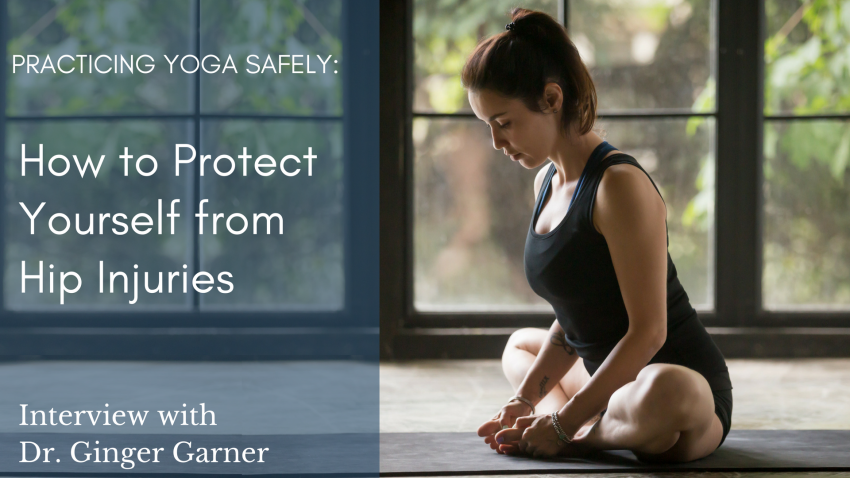
Knee pain can be a problem when you do yoga. Even though it sounds counterintuitive, yoga can be a great therapy for your condition. Outside Learn, an online education platform that offers comprehensive courses in nutrition, fitness, and yoga, has more information about yoga for knee pain. Follow the links to locate the best class for your needs. You can find a class that suits your schedule and level of pain.
The butterfly pose is a popular yoga exercise for knee pain. This seated position is done with your soles on the ground, your knees outstretched. This exercise is beneficial for groin and hip flexors, without placing excessive strain on the knees. This exercise can be done with either straight or slightly bent legs to reduce stress on your knees. In order to avoid straining your knees, you should switch sides if you are experiencing any discomfort.

Your knee micro-bend is key to making yoga safe for your knees. This posture prevents hyperextension. Additionally, it stimulates your knee muscles which in turn increases strength. Lunges can be a good yoga posture for knee pain. However, it is important to be gentle and allow your body to adjust. Remember, yoga isn't a quick fix, but it can help reduce the pain you are feeling and keep your joints in good health.
If you are suffering from knee pain, the best posture for it is kneeling. You can use towels, blankets, and blocks to do this. Keep your hips in this position by pulling your calf muscles back. Pull your buttock flesh back and lift your knee up. Try to hold this position for five to eight breaths. If you are capable, you may be able to hold it for longer.
The best way to stretch your knees is by doing a knee-healing position. This pose puts pressure on the knees and can strain ligaments. If you have sensitive knees or joint pain, it is best to avoid this position and consult a doctor if needed. Consult your doctor if you have had an injury in the past. This will allow you to get the proper treatment and diagnosis. To strengthen your body and alleviate pain in your knees, you should learn yoga.

Some yoga styles can cause knee pain. You should avoid placing pressure on your knees by avoiding asanas. However, you can modify these poses in order to reduce pressure on your knees. A yoga block can be used to relieve pressure and pain from your knee. Blocks can be used to help maintain balance while you are in a pose. It can also be helpful to modify certain asanas if you have a knee injury. Contact a doctor immediately to prevent discomfort from happening during yoga.
FAQ
Do I need to exercise every day?
No! You should do at least 30 mins of moderate-intensity activity 5 days per week. That could mean walking fast enough for you to get slightly out of breath and biking hard enough for you to sweat.
What is the best way lose weight?
It can be difficult to lose weight. Many people give in to temptation because they don't know how to proceed.
To lose that extra weight, however, there are simple steps you could take.
You must first ensure that you are consuming fewer calories than what you burn. If you are eating more than you are burning, then you are going to gain weight.
Second, you must start exercising regularly to burn off all those calories. You have the option of doing jogging or walking or cycling, as well as dancing.
Third, stop smoking cigarettes or drinking alcohol. These habits cause you to consume more calories than you would otherwise.
Fourth, it is important to reduce the consumption of junk food and fatty foods. They can be replaced by healthier options, such as fruits and vegetables, lean meats or whole grains, legumes, seeds, beans, and nuts.
Fifth, change your lifestyle. For example, you may need to get up early every morning to exercise before work.
Sixth: You must be disciplined, and you must follow your diet plan.
You can also burn excess calories by joining a gym, or taking an aerobics course.
These simple tips will help you quickly see results.
How quickly can I transform my body?
You must change your mindset. You have to be willing to change.
After you have made the decision to change, you should commit to working towards your fitness goals for at minimum 3 months.
Next, you will need to find a program that suits your lifestyle.
Setting realistic expectations is also essential. If you are unwilling to put in the time and effort necessary to achieve your goal, don't waste your money on a gym membership.
Instead, use your own free time to exercise outdoors.
You can lose 1 lb if you walk around the block for one hour each day.
Now that you know what you're going to do start planning how you will organize your life to fit this new plan.
This includes scheduling a time to exercise each morning before you leave for work and taking breaks throughout the day so that you can move.
It is important to reward yourself when you reach milestones. You can buy accessories and clothes that reflect your success.
Statistics
- Get free shipping and 25% off today. (healthline.com)
- 10 pounds in a month is likely during a lean bulking phase, especially for beginners. (muscleandstrength.com)
- According to the American Academy of Dermatology (AAD), men over 50 are at a heightened risk of developing it. (healthline.com)
- Cardmembers earn 5% Back at Amazon.com with a Prime Credit Card. (amazon.com)
- Are You One of the 20% of Guys (mh.co.za)
External Links
How To
What nutrients does a person need every day?
Daily nutrition is essential for men's healthy growth. Vitamins, minerals, vitamins, nutrients, carbohydrates, fats and fiber are all essential for the body.
Also, the male body requires certain nutrients at specific times during the day. Your body makes hormones, antibodies and enzymes when you are asleep. When you wake up, your body uses protein to repair damaged tissue and build muscles.
Your body burns fat at night and stores it as energy as glycogen. During this time, your body needs fewer calories but still needs sufficient nutrients. If you feel hungry, you may consider having a snack during the evening.
Working out requires adequate carbohydrate and protein intake. After a hard workout, muscle soreness may occur.
You must ingest carbs and protein within two hours of training to prevent this. Your body will breakdown stored glycogen and provide you with glucose for energy.
Additionally, it is important to eat protein right away after your workouts are over. This prevents muscle tissue loss that happens while you sleep.
Your body can produce lactic acid during intense physical activity. The body produces lactic acid when there is too much activity. This can cause fatigue. Eat foods high in carbohydrate, such as fruits, vegetables, to avoid this.
Carbohydrates offer your body the energy it needs for recovery from exercise.
Your diet may include lean meats like fish, eggs, milk cheese, yogurt or beans as well as lean proteins such as fish, eggs, egg yolks, cheese, yogurt, bean, peanuts and seeds.
All of these foods contain high-quality protein. Protein aids in muscle growth and repair of damaged tissues. Protein is also necessary for the production of sex hormones such as testosterone.
For healthy skin, hair and joints, it is important to eat enough fats. Healthy men should consume between 20% to 35% of their daily caloric intake from fat.
Fat protects your heart from cancer and keeps it strong. It also keeps your brain functioning properly.
Vegetable oils such as sunflower oil and soybean oil can provide most of your fat needs.
These oils have high amounts of monounsaturated oil fatty acids, (MUFAs). MUFAs help lower cholesterol and reduce inflammation. They protect your cells and prevent damage from free radicals.
Saturated fats (SFAs), are found mainly in animal products such as meat, milk products, and butter. SFAs can increase LDL ("bad") cholesterol as well as triglycerides. They can also increase weight and reduce belly fat.
Polyunsaturated fats (PUFAs) are found in plant-based sources like vegetable oils, nuts, seeds, and grains. PUFAs improve cardiovascular function and decrease inflammation. They also help control blood sugar and cholesterol.
Erectile dysfunction can often be a problem for men who have low HDL ("good") levels of cholesterol. A high intake of saturated fats leads to higher levels of bad cholesterol.
Men who eat large quantities of red meats or pork may develop prostate problems. When cooked at high temperatures, nitrates can be converted to nitrosamines. These compounds can cause lung cancer.
Many processed meats are high in nitrites, and other dangerous chemicals. Avoid them.
The American Heart Association suggests that no more than two servings per week of red meat should be consumed. Instead, choose poultry, fish, legumes, tofu, whole grain bread, and cereals.